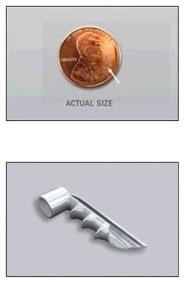
What is Micro-Invasive Glaucoma Surgery (MIGS)
This is beginning to change with the recent development of new devices and procedures designed to be less invasive. This field, which is known as MIGS or Micro-Invasive Glaucoma Surgery, is great news for glaucoma patients who are considering cataract surgery. One such microstent, roughly the size of an eyelash, can be placed into the eye’s drainage system during cataract surgery. It acts as a kind of scaffolding that helps to open and enlarge the drainage system. In so doing, the stent helps to lower intraocular pressure. This innovative device is similar in form and fashion to the stents used for heart conditions such as coronary artery disease.
Are You Considering Cataract Surgery?
Because insertion of the device is done at the same time as cataract surgery, patients who need or want cataract surgery can have a combined cataract and glaucoma procedure. The cataract portion is performed to improve vision, and the microstent placement is performed to help control glaucoma. Insertion of the microstent generally adds only a few minutes to the surgery and is done when the cataract portion is completed. The microstent adds little overall risk to the procedure. Insertion of the microstent, however, can help greatly with the task of controlling eye pressure and thus controlling a patient’s glaucoma.
Most patients with both cataracts and glaucoma are considered to be good candidates for this combined procedure. The microstent provides patients with an opportunity to reduce the number of medications they use to manage their disease. It also provides the opportunity to improve eye pressure without being subjected to an ever-increasing number of topical medications (eyedrops), each of which can have side effects for both their eyes and other organs such as the heart and lungs.
How Can Barnet Dulaney Perkins Eye Center Help You?
We are fortunate at Barnet Dulaney Perkins Eye Center to have Dr. Neil Atodaria, a board-certified, fellowship-trained glaucoma expert who specializes in the management of cataracts in patients who also suffer from glaucoma. He has been performing glaucoma surgery for nearly a decade in Arizona. He is proficient in other glaucoma surgeries as well, and is on the cutting edge of improving existing procedures.
Over the next several months we will be providing all of our glaucoma patients who are considering cataract surgery with more information on this exciting procedure. Eligible candidates will have the choice of undergoing cataract surgery alone, or cataract surgery along with insertion of the microstent. The addition of the stent does not alter the success of cataract surgery, but it can dramatically help with management of glaucoma.
Dr. Atodaria and the other physicians and staff members at Barnet Dulaney Perkins Eye Center will be happy to provide information to any patient who is interested in this surgical option. For those not interested in the microstent, other combined procedures are available. For example, Dr. Atodaria can perform a laser procedure at the time of cataract surgery known as endocyclophotocoagulation (ECP). This procedure has been paired successfully with cataract surgery for nearly two decades and has been shown to be very effective.
Thus, a new era in the surgical management of glaucoma for patients who are undergoing cataract surgery has begun. The treatment options for management of glaucoma in patients undergoing cataract surgery are expanding.
Please ask your doctor or one of our scheduling team members for more information on combined cataract and glaucoma surgery.


